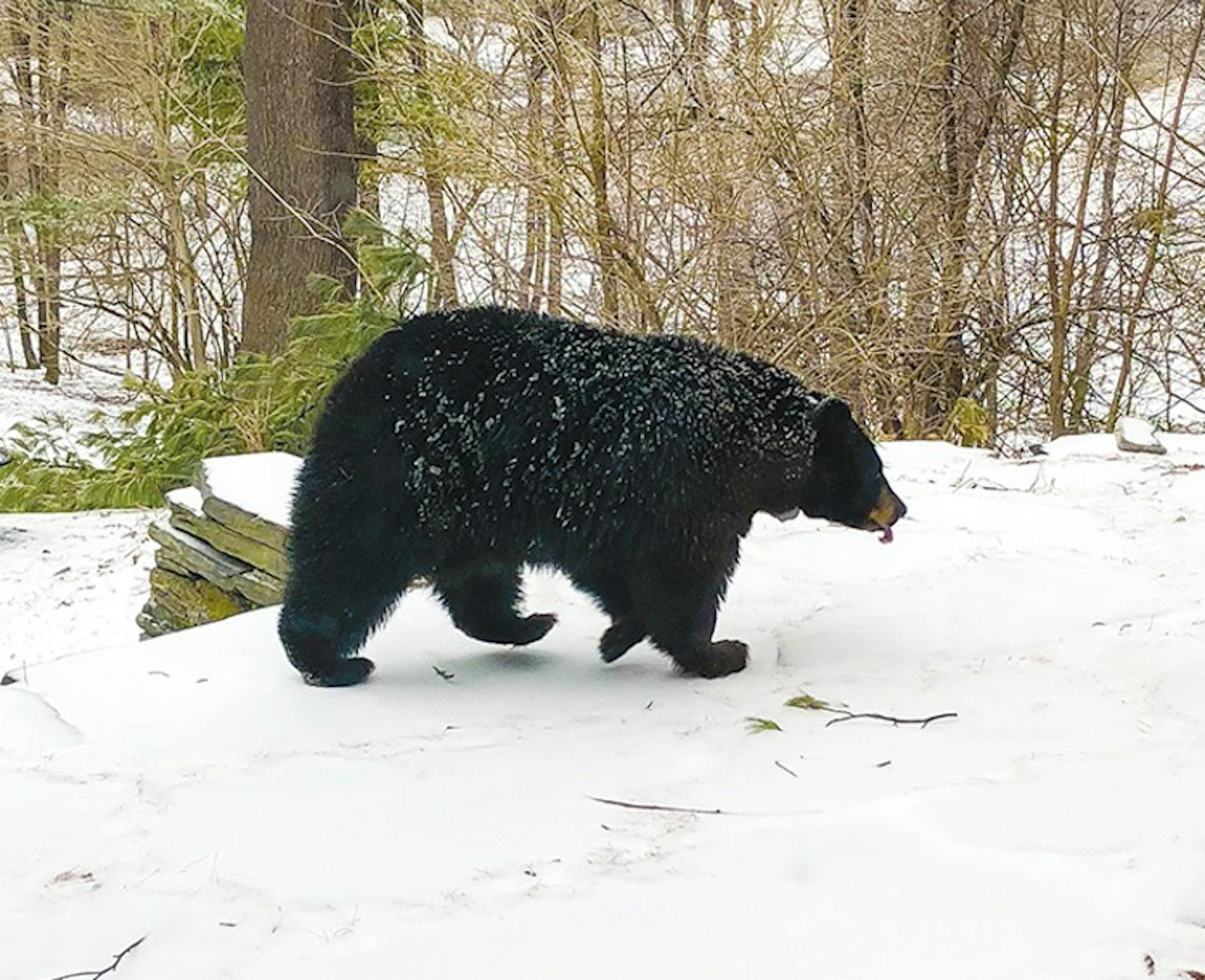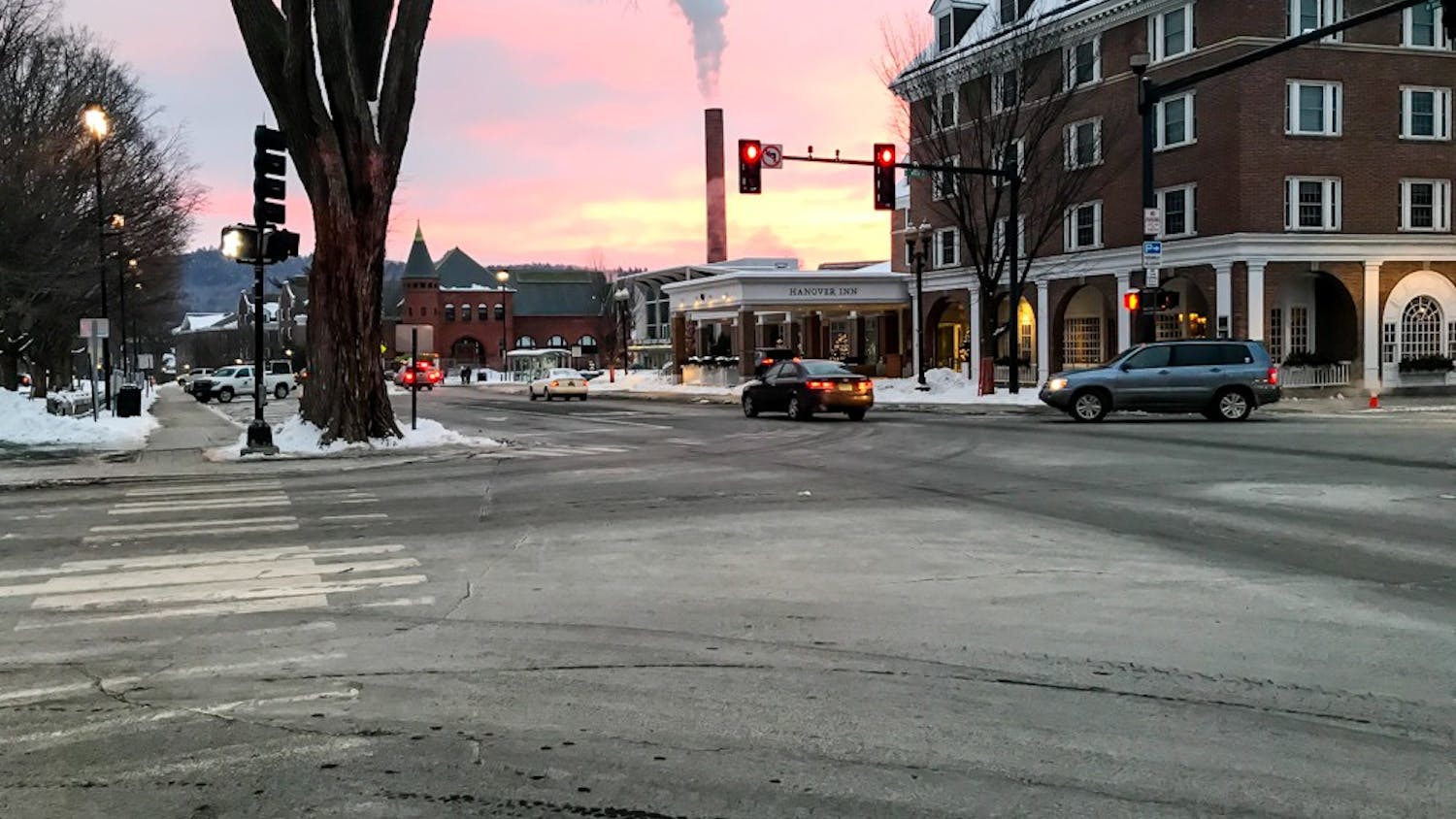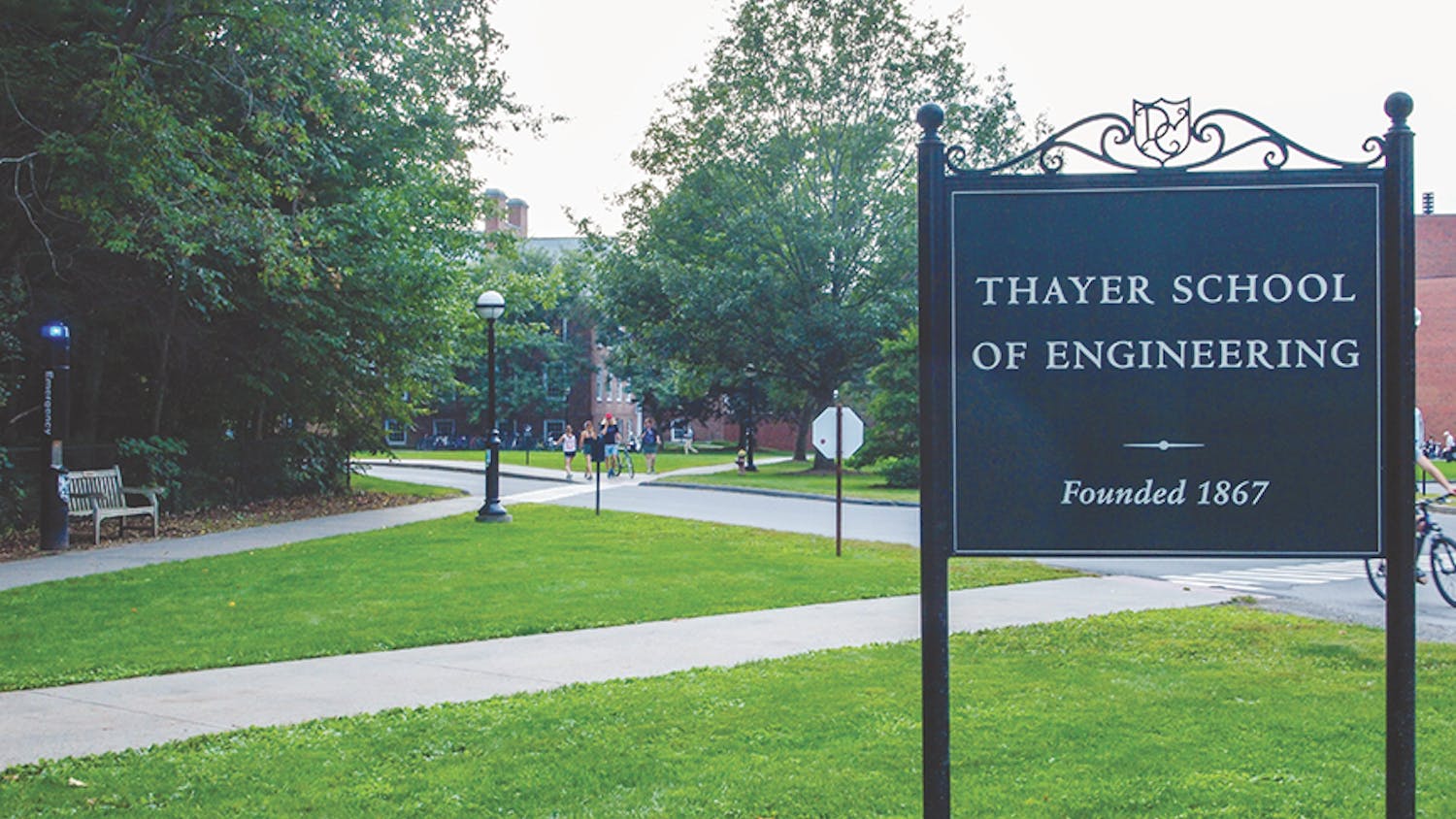After a long and arduous journey that covered thousands of miles, Mink the bear has once again returned to Hanover. Mink was spotted by a local resident for the first time in almost a year a few days before Green Key weekend, according to Hanover deputy fire chief Michael Hinsley.
Hanover town manager Julia Griffin said that Mink was spotted in the Carter Street neighborhood, which is near the Hanover Co-op on South Park Street. Griffin added that it was in this neighborhood that Mink became habituated to food attractants, as there were a few residents in the area who would repeatedly feed her.
“Up until a couple of years ago, there was an elderly woman and her son who lived on Carter Street who regularly fed the bears, in addition to this gentleman who fed her over in the School Street neighborhood, and [Mink] learned that she could be fed in that neighborhood as well,” Griffin said. “She knew that that was a neighborhood where she could probably find some black oil sunflower seeds.”
Data accrued from her tracking collar shows that since last July, Mink traveled “upwards of 30 miles a day” across New Hampshire and Vermont, crossing the border between the states multiple times, according to Griffin. Mink hibernated in a den near Killington, VT over the winter before emerging sometime in March, she added.
Mink, who was nicknamed by local citizens after the nearby Mink Brook, was dropped off by New Hampshire Fish and Game officials in a remote area of New Hampshire near the Canadian border last June. Last April, Mink was outfitted with a tracking collar by a team consisting of U.S. Department of Agriculture Wildlife Services nuisance black bear specialist Nancy Comeau, Hinsley, local bear expert Ben Kilham, Fish and Game wildlife biologist Will Staats and Fish and Game wildlife biologist and bear project leader Andrew Timmins.
At the time of Mink’s capture last April, Timmins said that compared to her yearlings, which had been relocated a year prior, Mink had the highest likelihood of returning to the area. Timmins’ prediction has been proven correct, and Hinsley called her return “not unexpected.”
Hinsley, who has been labeled Hanover’s chief “bear wrangler” by some news outlets, said that he does not consider the title an accurate description of his work and that he has been primarily focused on trying to reduce the amount of food attractants in the town that are available for Mink and other bears.
Griffin said that while she does not think Mink currently poses a danger to the town, it is important for residents to be mindful of attractants, including garbage dumpsters and bird feeders. Hinsley agreed, calling birdseed a “powerful attractant” and adding that there is no reason for town residents to have bird feeders up “at this point.” This year, Hanover town officials asked residents to remove bird feeders by April 1.
“When we look at a map, we see her and the distance that she can travel in almost a perfectly straight line to a location in downtown Hanover where there are bird feeders,” Hinsley said. “It’s just amazing how this bear can smell birdseed and make a beeline right to it.”
Hinsley also said that town residents not only need to remove their bird feeders, but also dispose of any loose birdseed and be mindful of dog food left on porches, chicken coops and beehives. For Dartmouth students living off-campus, however, he added that there needs to be greater awareness of dumpster security. Griffin said that it is important for Dartmouth students to keep their garbage and recyclables inside their properties until the day of collection.
“I would say that I don’t see that she really does pose a danger to the community any more or any different than any other wild animal that we have in the state of New Hampshire,” Hinsley said. “There’s no increased risk. There’s no decreased risk.”
This will be the first summer in three years in which Mink will be without cubs or yearlings. Because of this, Griffin said that she expects Mink to be less active than in previous summers, as she believes Mink will be looking for a potential mating partner. She added that Mink was not in a condition to deliver cubs this year because of her travels and “poor conditions for bears last summer and fall,” adding that Mink was “very thin” and had lost around 60 pounds since her relocation.
Griffin said that while Mink is less of a nuisance than she was a few years ago, a new litter of cubs would probably mean “that [the town] would be right back with this problem next spring.”
As evidenced by Mink’s return to Hanover, Griffin called the idea of relocating Mink once more “futile,” adding that the sow had proved that she was “relocation-proof.” She added that while she had heard suggestions such as moving Mink to a zoo or feeding Mink at an undisclosed location for the rest of her life, she said that the suggestions ran counter to how Fish and Game approaches their handling of wildlife in the state of New Hampshire.
“If she becomes a real nuisance bear again, I think she’ll have to be euthanized and of course, then we get all the Facebook pages, and the nasty letters and phone calls, which is why we just need all of our residents to behave themselves and manage their properties so that there’s no attraction for her in town,” Griffin said.
Although there are around 5,000 black bears in the state of New Hampshire, Mink has attracted an unusual level of publicity for several years now. After Mink and her cubs began to make repeated incursions into Hanover two springs ago, Fish and Game planned to euthanize the sleuth of bears.
Following a petition started by Enfield, NH resident Nicole Cantlin to save the sow and her three cubs after it was revealed that they were going to be euthanized, Sununu intervened and her three young cubs were instead relocated to northern New Hampshire over Memorial Day weekend in 2017. To date, the petition has received over 13,000 signatures.
One of the cubs was lawfully shot and killed by a hunter in Quebec a few weeks after the relocation. Mink’s latest set of cubs, born in the winter of 2017, are still at the Kilham Bear Center, according to Griffin.
“The bear has really caught the attention of the populace,” Hinsley said.
Anthony is a '20 from Dallas, TX. Anthony plans to major in Film & Media Studies at Dartmouth, and decided to join The D to further his passion for writing. In addition to working with The D, Anthony considers himself a passionate supporter of the Dallas Cowboys and spends his days watching movies, admiring fine art, and using the Oxford comma.




